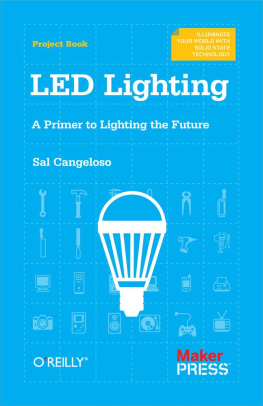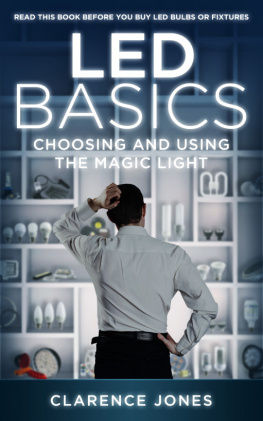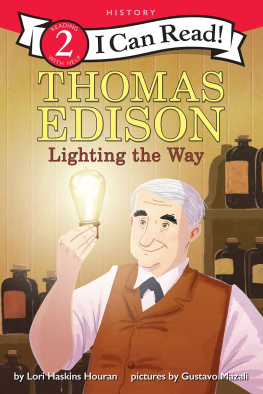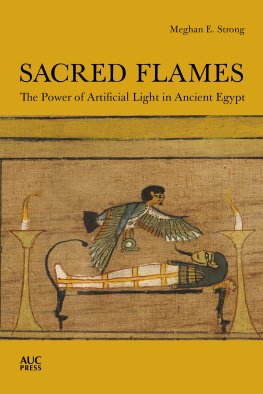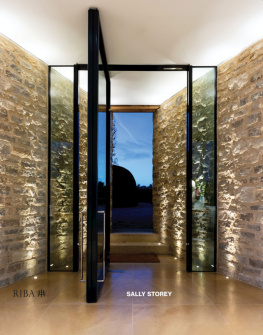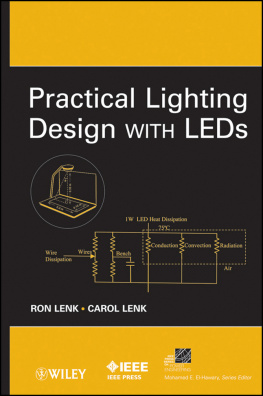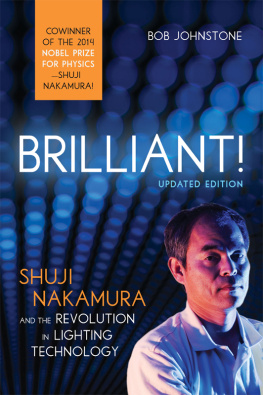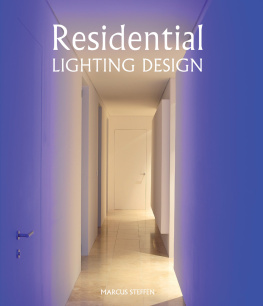Preface
Light-emitting diodes are the future of lighting. Just as the incandescent gave way to the compact fluorescent lamp (CFL) in our homes and offices, the CFL is yielding to the light-emitting diode. These are inherently slow processes given the number of bulbs that need to be replaced and the lifetime of those bulbs, but a tectonic shift is underway. In a few short years, the household incandescent will be a quaint thought, and CFLs will be looked upon as a misguided, poison-laced stepping stone.
LEDs are, of course, nothing new. The technology has been around since the early 1900s, and for years weve seen LEDs in almost all our electronic equipment, regardless of the device, its function, or its maker. For decades they have been affordable to purchase and cheap to operate, but theyve largely been relegated to the red, blue, and green status indicators on our computers, radios, and routers. Powered by just a few milliamps and usually outlasting any device they operated within, LEDs served their purpose but were far from fulfilling their potential. Recently, high-power, high-quality LEDs have started lighting our homes and offices, and the big lighting companiesGeneral Electric, Osram Sylvania, and Philipsas well as a number of competitors, are pushing them into the mainstream.
According to the US Department of Energy (DOE), lighting consumes over 14% of all the electricity we use. That means lighting is large industry, but it operates under a number of masters. Not only do organizations like the Department of Energy get involved in lighting, but so does Congress, and all businesses have to take a stance, as does anyone concerned with their energy footprint. Over the course of the next few years, cost-conscious consumers and energy-savvy businesses will ultimately decide if any product or underlying technology is viable or not. And the stakes are not insignificant: according to the DOE, future changes will yield a 19% drop in the energy consumption of lighting. That drop is forecasted to be 46% by 2030 according to a January 2012 report examining the Energy Savings Potential of Solid-State Lighting.
You wouldnt be here if you didnt already know what a light-emitting diode is, but you should remember this: an LED is just a source of light. How that light is generatedby running electrons through a semiconductor, resulting in a process known as electroluminescenceis fundamentally different than how the incandescent, filament-based bulb works. That our light is being provided by a semiconductor, not the heating of a material (electroluminescence vs. incandescence), is the key to everything youll read in this book and the future of mankinds light.
Were at the start of a revolution in home, commercial, and public lighting that will be the biggest shift in the sector since the development of the tungsten filament over 100 years ago. Solid-state lighting is the future and the LED is the engine moving it forward. In a few years the market will almost certainly have settled on LED bulbs (not entirely, but predominantly). Before then, the technology has a long way to go and we as consumers have a lot to learn.
Conventions Used in This Book
The following typographical conventions are used in this book:
Italic Indicates new terms, URLs, email addresses, filenames, and file extensions. Constant width Used for program listings, as well as within paragraphs to refer to program elements such as variable or function names, databases, data types, environment variables, statements, and keywords.
Tip
This icon signifies a tip, suggestion, or general note.
Warning
This icon indicates a warning or caution.
Using Code Examples
This book is here to help you get your job done. In general, you may use the code in this book in your programs and documentation. You do not need to contact us for permission unless youre reproducing a significant portion of the code. For example, writing a program that uses several chunks of code from this book does not require permission. Selling or distributing a CD-ROM of examples from OReilly books does require permission. Answering a question by citing this book and quoting example code does not require permission. Incorporating a significant amount of example code from this book into your products documentation does require permission.
We appreciate, but do not require, attribution. An attribution usually includes the title, author, publisher, and ISBN. For example: LED Lighting by Sal Cangeloso (OReilly). Copyright 2012 Sal Cangeloso, 978-1-4493-3476-5.
If you feel your use of code examples falls outside fair use or the permission given above, feel free to contact us at .
Safari Books Online
Note
Safari Books Online is an on-demand digital library that delivers expert content in both book and video form from the worlds leading authors in technology and business.
Technology professionals, software developers, web designers, and business and creative professionals use Safari Books Online as their primary resource for research, problem solving, learning, and certification training.
Safari Books Online offers a range of product mixes and pricing programs for organizations, government agencies, and individuals. Subscribers have access to thousands of books, training videos, and prepublication manuscripts in one fully searchable database from publishers like OReilly Media, Prentice Hall Professional, Addison-Wesley Professional, Microsoft Press, Sams, Que, Peachpit Press, Focal Press, Cisco Press, John Wiley & Sons, Syngress, Morgan Kaufmann, IBM Redbooks, Packt, Adobe Press, FT Press, Apress, Manning, New Riders, McGraw-Hill, Jones & Bartlett, Course Technology, and dozens more. For more information about Safari Books Online, please visit us online.
How to Contact Us
Please address comments and questions concerning this book to the publisher:
| OReilly Media, Inc. |
| 1005 Gravenstein Highway North |
| Sebastopol, CA 95472 |
| 800-998-9938 (in the United States or Canada) |
| 707-829-0515 (international or local) |
| 707-829-0104 (fax) |
We have a web page for this book, where we list errata, examples, and any additional information. You can access this page at:
http://oreil.ly/SC_LED
To comment or ask technical questions about this book, send email to .
For more information about our books, courses, conferences, and news, see our website at http://www.oreilly.com.
Find us on Facebook: http://facebook.com/oreilly
Follow us on Twitter: http://twitter.com/oreillymedia
Watch us on YouTube: http://www.youtube.com/oreillymedia
Acknowledgments
Perhaps my favorite part of writing this book was the great people that met along the way. Id like to extend special thanks to David Cardinal, Julian Carey, John Chu, Tom Riordan, Brett Sharenow, Bert Tao, Deanna Siste, Eric Holland, Andy Beck, Tom Dalton, Brian Wilcox, Susan Larson, and my technical editor, Richard Stevenson. This book would not have been possible without the help (and patience) of Brian Jepson and Gena Vacanti.
Chapter 1. Opening Remarks
First off, its all about the lumens. Lumens are the visible light given off by a source, and they are the ultimate goal. Wattage has often been confused with lumens, thanks to how incandescent bulbs are rated (everyone knows that a 60W bulb is not as bright as a 100W one), but more efficient lighting technologies have greatly changed the relationship between wattage (essentially power usage) and lumens (light output). For example, an incandescent might operate at about 12-15 lumens-per-watt (lm/W), while an LED bulb will be in the range of 40-50, a much greater luminous efficacy (). CFLs stack up well when it comes to lumens-per-watt, but they dont have the lifespan of LEDs. CFLs have all sorts of other issues that well address later, such as problems with disposal. And those LED bulbs? They are just todays basic, commercially available LEDscutting edge models can be much more efficient. These models might produce over 150 lm/W, and even higher than that in laboratory settings.

